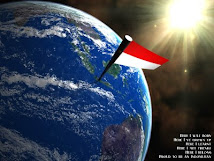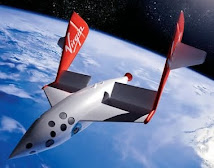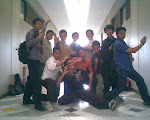Wednesday 25 January 2012
Membangun IPTEK Aeronautics and Astronautics
Diposting oleh
Astrophysics Boy
di
10:58:00
0
komentar
![]()
![]()
Thursday 19 January 2012
Indonesian Institute of Aeronautics and Astronautics
Indonesian Institute of Aeronautics and Astronautics
IIAA advances the state of aerospace science, engineering, and technological leadership.
IIAA is the shaping, dynamic force in aerospace – The forum for innovation, excellence and global leadership.
Universities with programs in aerospace engineering or related fields may form Student Branches, which are overseen and in part funded by their parent Section.
Students & Educators
A simple, compelling philosophy drives our commitment to math, science, and technology education. Make it exciting, make it empowering, and make it fun.
Let's change the world.
IIAA offers and sponsors a wealth of resources to support educators at both the university level and K-12: publications & online tools, classroom grants, our Educator Associate Program, informative aerospace links. The list goes on and on.
Kids
Fly the Wright Flyer simulation. Test drive interactive flight tools. Enjoy games, puzzles, fun experiments, teen-recommended books and movies, and more.
More info >
History of Aerospace
Informative timelines show you where we've been. Follow the course of aerospace through today's industry-wide transformation.
More info >
Are YOU ready to plan YOUR future?
Are YOU ready to take YOUR place in history?
INSPIRE’s unique design allows those selected access to an On-Line Community, and once in the community, to complete for grade appropriate STEM experiences during the summer months, such as:
- A one-day VIP tour and workshop at a NASA facility.
- A two-week learning experience on the campus of a participating college or university.
- Paid summer internships at a NASA facility working with scientists and engineers as mentors.
NASA will be accepting applications to join the On-Line Community in the fall. For the latest information about this exciting program, please visit NASA's Web site at: www.nasa.gov/education/INSPIRE.
Team Indonesia Rocketry Challenge
For more information on careers in aerospace, visit www.launchintoaerospace.org.
Special Thanks to:
Prof. H. Bacharuddin Jusuf Habibie
TNI Angkatan Udara
Sumber:
1. NASA
2. AIAA
3. LAPAN
4. PT Dirgantara Indonesia
Diposting oleh
Astrophysics Boy
di
13:16:00
0
komentar
![]()
![]()
Label: Indonesian Institute of Aeronautics and Astronautics, Indonesian Space Sciences Technology School
Wednesday 18 January 2012
Hunting the Higgs
His latest book is How the Hippies Saved Physics: Science, Counterculture, and the Quantum Revival.
Copyright: Project Syndicate, 2012.
www.project-syndicate.org
Sumber Foto: CERN
Diposting oleh
Astrophysics Boy
di
05:19:00
0
komentar
![]()
![]()
Label: A Unified Physics
Sunday 15 January 2012
The Higgs boson particle
The Higgs boson or Higgs particle is an elementary particle initially theorised in 1964, and tentatively confirmed to exist on 14 March 2013.
Diposting oleh
Astrophysics Boy
di
10:55:00
0
komentar
![]()
![]()
Thursday 12 January 2012
Memahami Energi Terbarukan
- Power generation. Renewable energy provides 19% of electricity generation worldwide. Renewable power generators are spread across many countries, and wind power alone already provides a significant share of electricity in some areas: for example, 14% in the U.S. state of Iowa, 40% in the northern German state of Schleswig-Holstein, and 49% in Denmark. Some countries get most of their power from renewables, including Iceland (100%), Norway (98%), Brazil (86%), Austria (62%), New Zealand (65%), and Sweden (54%).
- Heating. Solar hot water makes an important contribution to renewable heat in many countries, most notably in China, which now has 70% of the global total (180 GWth). Most of these systems are installed on multi-family apartment buildings and meet a portion of the hot water needs of an estimated 50–60 million households in China. Worldwide, total installed solar water heating systems meet a portion of the water heating needs of over 70 million households. The use of biomass for heating continues to grow as well. In Sweden, national use of biomass energy has surpassed that of oil. Direct geothermal for heating is also growing rapidly.
- Transport fuels. Renewable biofuels have contributed to a significant decline in oil consumption in the United States since 2006. The 93 billion liters of biofuels produced worldwide in 2009 displaced the equivalent of an estimated 68 billion liters of gasoline, equal to about 5% of world gasoline production.
Diposting oleh
Astrophysics Boy
di
10:44:00
0
komentar
![]()
![]()
Tuesday 10 January 2012
Potensi Energi Terbarukan
Renewable energy is derived from natural processes that are replenished constantly. In its various forms, it derives directly from the sun, or from heat generated deep within the earth. Included in the definition is electricity and heat generated from solar, wind, ocean, hydropower, biomass, geothermal resources, and biofuels and hydrogen derived from renewable resources.
Diposting oleh
Astrophysics Boy
di
10:43:00
0
komentar
![]()
![]()
Friday 6 January 2012
Mengembangkan Energi Terbarukan di Indonesia
Indonesia masih tertinggal jauh dalam pemanfaatan energi terbarukan. Jika dibandingkan dengan Jepang dan China, energi terbarukan di Indonesia cenderung mandek. Apa alasannya?
Kendalanya adalah peran swasta yang masih minim. Padahal, peran swasta sangat dibutuhkan kontribusinya dalam mengembangkan energi terbarukan ini.
Sumber:
Wikipedia
Diposting oleh
Astrophysics Boy
di
10:32:00
0
komentar
![]()
![]()
Label: The Physics of Energy
Tuesday 3 January 2012
Mari Kita Kembangkan Energi Terbarukan
Diposting oleh
Astrophysics Boy
di
10:36:00
0
komentar
![]()
![]()
Monday 2 January 2012
Mengembangkan Energi Terbarukan
Diposting oleh
Astrophysics Boy
di
10:32:00
0
komentar
![]()
![]()
Label: The Physics of Energy
Sunday 1 January 2012
Energi Terbarukan Untuk Desa
Jika akses ke Teknologi Informasi modern penting bagi pemberdayaan ekonomi, begitu pula akses ke energi, terutama Listrik.
Bagaimana menciptakan energi Listrik dengan harga terjangkau dan dapat diakses oleh semua warga negara?
Menambah sambungan jaringan listrik nasional ke semua desa terpencil di seluruh negeri merupakan kerja besar dan mahal.
Terutama lagi, solusi seperti itu tak ramah lingkungan.
Saat ini bahan bakar fosil sudah menipis dan perubahan iklim karena emisi karbon merupakan ancaman yang makin membahayakan.
Kita ingin menemukan sumber energi yang sesuai dengan kebutuhan ekonomi rakyat tanpa menimbulkan lebih banyak masalah daripada yang dapat diselesaikan.
Sepertinya Tenaga Surya/Matahari, Tenaga Air, Tenaga Angin, Tenaga Gelombang Air laut merupakan alternatif pilihan.
Selanjutnya ialah biogas bentuk energi terbarukan memanfaatkan kotoran Sapi, Unggas, dan limbah lain yang ada di mana-mana.
Tiap desa nantinya mempunyai pusat-pusat produksi energi tersendiri, yang mampu menghasilkan energi bagi warganya sesuai dengan potensi desanya.
Saya sempat berpikir, bagaimana kalau seluruh atap rumah rakyat kita dipasang panel surya?
Mungkin tidak ada cerita lagi mengenai "Aliran" Atau mati listrik.
Semoga.
Photo by: Arip Nurahman
Wallohualam.
Diposting oleh
Astrophysics Boy
di
05:39:00
0
komentar
![]()
![]()
Label: A Unified Physic























